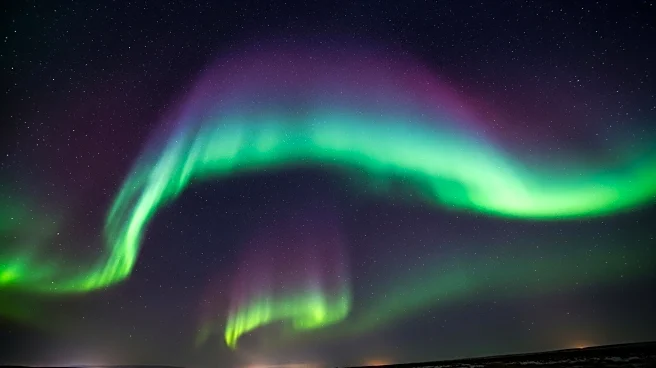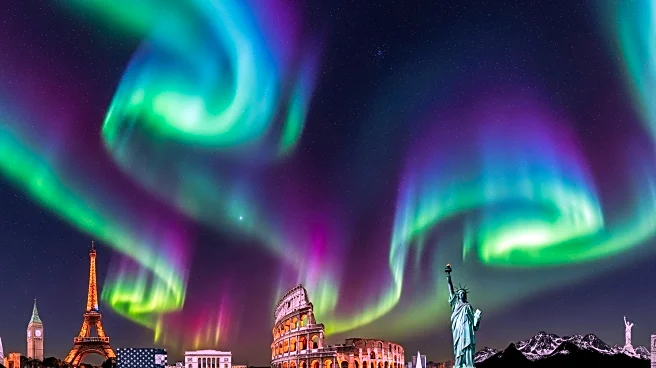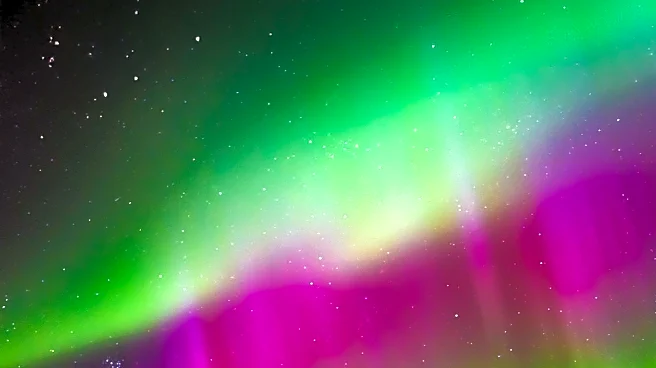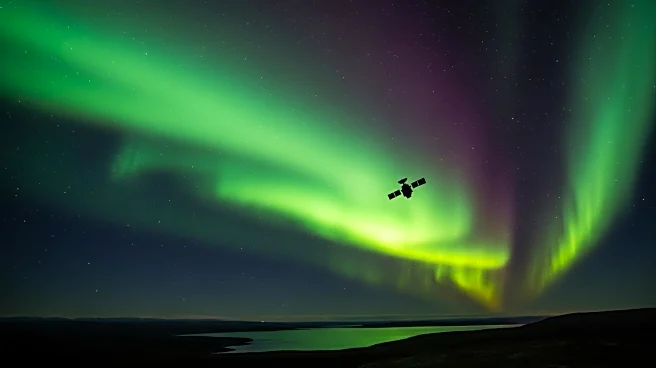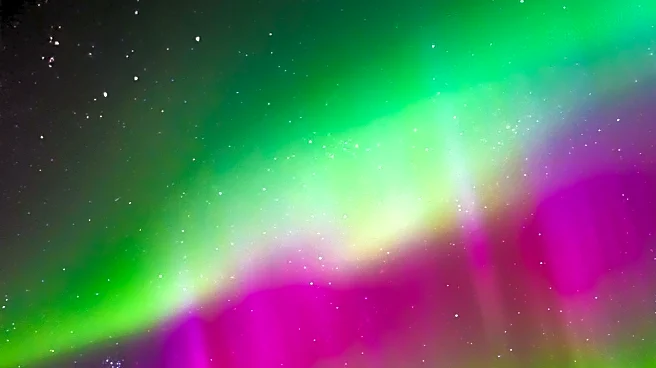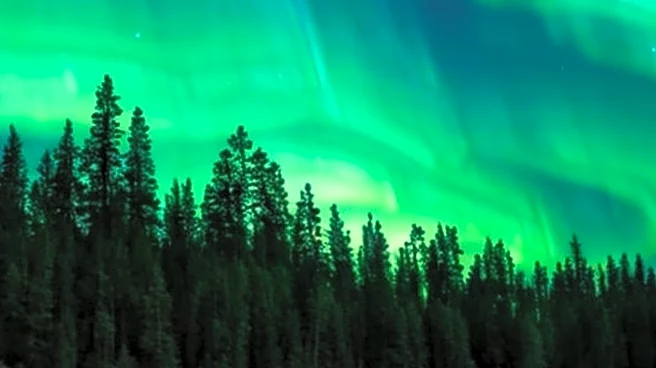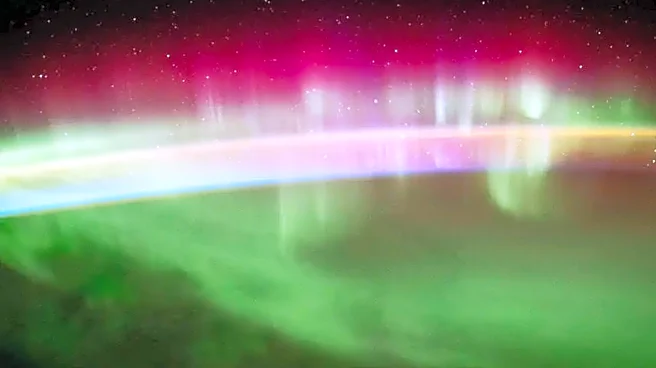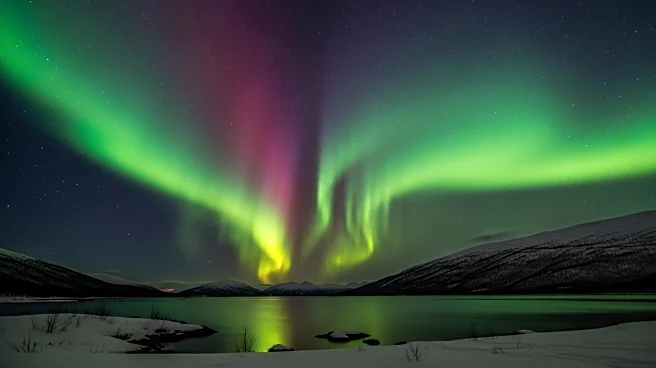What's Happening?
The northern lights are anticipated to be visible again due to geomagnetic storms caused by a coronal mass ejection that reached Earth. This marks the second occurrence of auroral activity within the week, following intense geomagnetic storms. The solar activity has been intensifying since late 2024 and is expected to peak at 'solar maximum' in 2026. The aurora borealis occurs when solar flares or coronal mass ejections interact with Earth's magnetic field, creating colorful displays in the sky. The Kp index, which measures geomagnetic activity, is forecasted at four, indicating moderate auroral activity.
Why It's Important?
The recurrence of the northern lights within a short period highlights the ongoing solar activity and its effects on Earth's magnetic environment. This phenomenon provides an opportunity for stargazers to witness the aurora borealis, which is typically rare in lower latitudes. The event also serves as a reminder of the dynamic nature of space weather and its potential impacts on technology and communication systems. As solar activity continues to increase, understanding and predicting these events become crucial for mitigating risks associated with geomagnetic storms.
What's Next?
With solar activity expected to peak in 2026, further auroral displays may occur, offering more opportunities for observation. However, as geomagnetic activity decreases, the visibility of the northern lights is likely to diminish. Observers are encouraged to take advantage of current conditions and seek locations with clear skies and minimal light pollution for optimal viewing. Continued monitoring by space weather agencies will provide updates on solar activity and its potential impacts.
